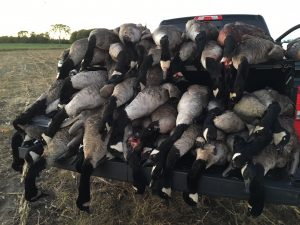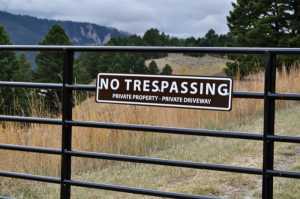I’ve probably written about this weekend before, but if I did it was over a decade ago and to be perfectly honest, I can’t even find it anymore in the morass of scribblings and jotting that I’ve put down here. Perhaps I imagined I wrote about it, but really didn’t. No matter.
You see, for me and many in my circle, this is the most important weekend of the year.
Now, like most of you, I look forward to all the annual milestones that make up a hunter’s calendar but this weekend, the much-heralded Double Opener, is without a doubt the only one that has become sacrosanct and essentially non-negotiable when it comes to my attendance. As a disclaimer, I did miss one in 2010 as I had parental duties with my wife as we navigated sleep training of a 13-month-old child with her then weekend work schedule, but the less said about that the better.
I have not missed one since and I have no intent on missing any future ones so long as I can control things. My employer, my family, and my friends understand the importance and they respect (or at least tolerate) that I am but a faithful servant to the waterfowl gods for that few days.
For a long time now, the Ontario “early goose” season has had a split in it whereby we can hunt resident birds starting around Labour Day, but then the season closes for a brief window in mid-September. There are conservation and biological reasons around this, and far more qualified minds can likely comment on it, but what is important is that the goose season reopens on the same day that the duck season opens in our zone. Hence the creatively-named Double Opener.
Early iterations of this weekend were famous for their debauched gluttony and heavy partying. We were but a bunch of dumb, invincible twenty-somethings, with little regard for our brains, livers, gastrointestinal tracts, or prescribed bedtimes. The memories are comical, the photos unfortunate, and the hangovers were the stuff of legends. Our mentors and parents shook their heads at us and reprimanded our behaviour, but we felt like we were the vanguard of something new and exciting, and man did we have fun. Those weekends in the late 2000’s and early 2010’s did more to age me than all the workplace and marital stress I ever experienced, but we bonded with friends, we hunted as hard as our pounding heads and wobbling stomachs allowed, and we laid the foundation for a tradition that still goes on. We laughed, argued, teased, and occasionally we physically fought, but we also killed geese and ducks, and we ate like soldiers about to face their final battle.
Then there was a shift, and although the precise year is tough to pinpoint, sometime in the mid-2010’s we actually became good at waterfowling. It is not an immodest overreach to say that at least in the locales we frequented, we developed a name. Guys wanted to hunt with us, guys wanted to eat with us, and guys wanted to party with us. In some ways it almost became an outfit, an operation that required planning and maintenance, and the weekend took on an identity of its own. For one weekend a year we ran a restaurant/hotel/guiding service and by the end, some of the luster would fade when hunts did not pan out, or when we had to split the group and track who had what decoys, who was calling for what group, and did we even have enough trucks and fields to accommodate everyone. It is not melodrama to state that we grew big, and we grew fast, and despite the challenges when our ranks grew, and the equipment at our disposal grew, and our access grew, we enjoyed some absolutely heroic waterfowl hunts. Big limits with big groups, more ducks and geese and memories than I could process in this space, and even to this day I’ll hear a story from one of those Double Opener weekends and say “Right, I was there for that” and quietly lament that I had forgotten those particular finite moments, while also wondering how many others I had filed away gathering dust in my mind. In those same moments that we matured from a bunch of rowdy yahoos into seasoned successful waterfowl hunters, we were also maturing into family men with careers and businesses to run, wives and children to consider, and mortgages and obligations to service. Double Opener was now also a reprieve, a chance to be immature in pantomime, and a time to keep forging those new experiences in the fields and marshes and “on the cricks”.
And now, I’m afraid to say, I notice it changing again. The demographic has changed. The professionalism we once aped has actually blossomed in the form of leaseholding guide operations forcing out the locals, as well as a whole new generation of goose hunters that have come into the mix. The lands we used to monopolize (for better or for worse) have been sold and changed hands, and with that, so has our once seemingly easy access.
None of this is bad, but as the song goes “competition’s getting younger, tougher broncs I can’t recall” and I don’t say that in bitterness, or to begrudge them their success. They are what we once were and now we’re the “old fuckers” we once laughed about when we were the impudent upstarts. All things change and as frustrating as a closed field or another set of guns after the same birds can be, I do smile to know that maybe in a small way, we contributed to strengthening the tradition.
Now to say we “inspired” something would be too much, and archetypes we are not, and all of this is to say nothing of the future that all of our kids have in this greatest of sports we call waterfowling, because just as we built a tradition that grew, morphed, and evolved, as will they hopefully with the positive parts of whatever lessons we can impart on them in hand. If one day I cannot hunt a Double Opener because my kids or the kids of my friends have all the good spots on lockdown and are filling all the beds in the cabin, then I’ll lay down the calls for a little while so they can experience what I loved. There will be many other mornings for me to squawk at geese and pound my shoulder with fruitless winghsooting.
But still, this piece is not a eulogy to Double Opener, but more of a reminiscence and a recommitment. All the above notwithstanding, we are still going to have a sometimes raucous, definitely memorable time in just a few short days. We will eat with abandon, and we will crack cold ones. We will pretend, in some ways, that we are 27 years old again, and we’ll be slow to rise. But this time it will be backaches, and bum knees, and frozen shoulders, and hernias hobbling us, and not the rotten guts and well-earned hangovers of 15 years ago.
Enjoy every part of the duck camp experience friends, for they can be fleeting.


